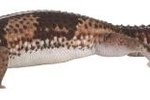
Tadpoles hatch from frogs' eggs and can only survive in water. As they undergo metamorphosis to become adult frogs they change in many ways, losing their swimming tails and developing legs. Both need to take in oxygen from their environment, and the way they respire also changes as they develop. Tadpoles use gills, while mature frogs have three types of respiration.
Respiration in Tadpoles
Tadpoles have tiny external gill flaps that extract oxygen from water as it passes over them. Tadpoles open their mouths as they swim and take in water. As the mouth closes, muscles transfer the water to the gills. These consist of thin membranes called lamellae, which take oxygen from the water where it enters the blood stream through the process of diffusion. Tadpoles can also rise to the surface and gulp oxygen from the air. As tadpoles mature the gills are absorbed by the body as other respiratory systems develop.
Cutaneous Respiration in Frogs
Over 50 percent of the respiration in adult frogs takes place through the skin, the journal "Biological Reviews of the Cambridge Philosophical Society" reports. This is called cutaneous respiration. Most carbon dioxide is exhaled through the skin and most oxygen is absorbed through the skin, except during the breeding season when the lungs absorb more oxygen. The skin is thin and has blood vessels and capillaries close to the surface. Frogs always have moist skin due to glands which produce mucus across the skin, and this moisture allows the oxygen in the air to be absorbed into the skin and transmitted into the blood stream. During hibernation and aestivation this is the only form of respiration they use.
Buccopharyngeal Respiration in Frogs
Buccopharyngeal respiration occurs through the lining of the mouth. This only occurs when the frog is not submerged in water. The lining of the mouth is very moist and can be used to bring oxygen into the bloodstream by dissolving it and diffusing it into the blood capillaries, in a similar way to the skin respiration system.
Pulmonary Respiration in Frogs
Pulmonary respiration is breathing through the lungs, as people do. Frogs' lungs are comparatively underdeveloped and are not used all the time. As they have no diaphragm to help regulate air pressure in the lungs, they use their mouth, gullet and nostrils to push the air in and out of the lungs. Frogs use their lungs when they are active and cannot get enough oxygen from cutaneous respiration.
References
Resources
Photo Credits
-
Hemera Technologies/PhotoObjects.net/Getty Images




